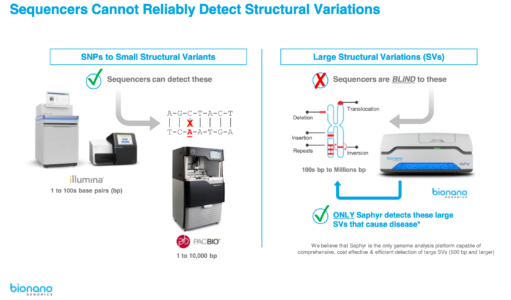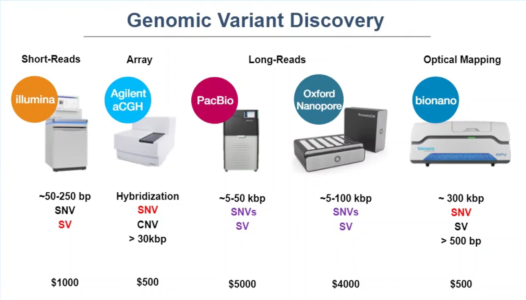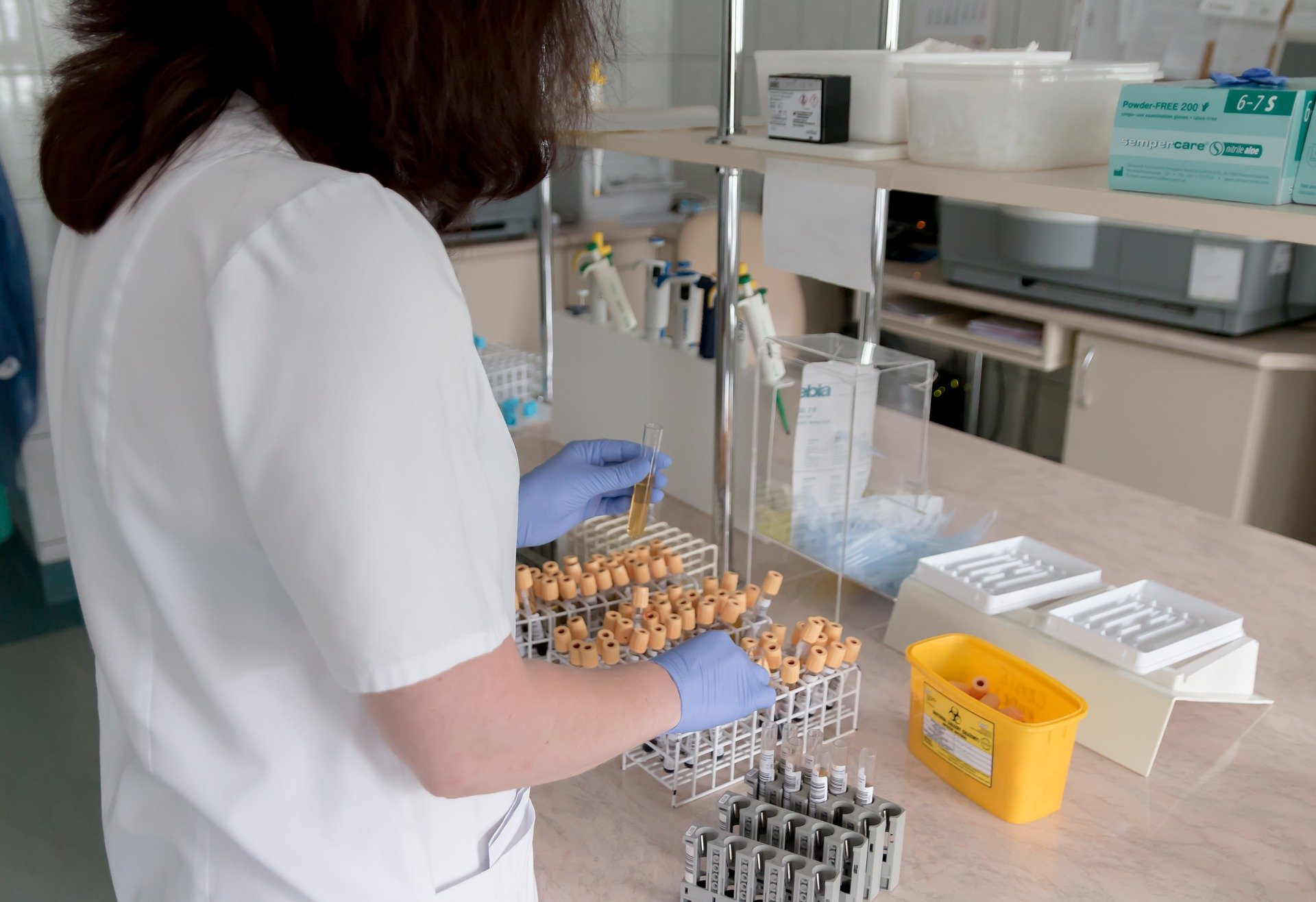Bionano Genomics is a life sciences instrumentation company in the genome analysis space. The company develops and markets the Saphyr system, a platform for ultra-sensitive and ultra-specific structural variation (SV) detection that enables researchers and clinicians to accelerate the search for new cancer diagnostics and therapeutic targets and to modernize the practice of cytogenetics. The Bionano’s subsidiary, Lineagen, Inc., provides molecular diagnostics services for individuals.
Cytogenetics means the detection of chromosomal disorders in the laboratory by karyotyping (examining the chromosomes within a cell). Molecular cytogenetics involves testing of a specific disease locus by fluorescence-in-situ hybridization (FISH) assay.
“When it comes to genome analysis,” says Erik Holmlin, PhD, CEO of Bionano Genomics, “sequencing or even microarray technology leaves a ton of information uncovered.” Hamlin adds that the missed information includes structural details such as location, quantity, and orientation. Such information reveals critical aspects of a genome that a sequencer alone cannot measure. “If you’re doing a genome analysis without getting an accurate structural picture,” he advises, “you’re not doing a deep enough analysis for 2020.”
Bionano’s genome imaging platform combines optics for single molecule detection with nanotechnology to sequence patterns of specific DNA sites across the whole genome to define the structure of the genome and reveal variations in structure that drive disease. What makes Saphyr unique are the nanochannel arrays at the heart of the Saphyr Chip. Each chip has hundreds of thousands of tiny channels that unravel and uniformly linearize ultra-long DNA chromosomal fragments from solution so they can be imaged with their native structure intact. The system is capable of analyzing long molecules from 100,000 bp to megabase pairs and can generate 640 Gbp per chip per day (320 Gbp per flowcell of molecules larger than 150 kbp).
According to the company, the biggest opportunity for Bionano in the next five years is to make Saphyr available to clinical cytogeneticists as a research-use-only platform they can adopt and validate for use in their certified laboratories for patient testing. Saphyr has the potential to dramatically simplify the traditional workflow in cytogenetics by streamlining it and giving them results that may be superior to the ones they get today. The company expects to see adoption initially in genetic diseases and blood cancers, with eventual expansion into solid tumors. For example, many of the newly recognized clinically significant genetic markers in pediatric leukemias cannot be reliably detected by routine diagnostic assays – they remain cryptic by karyotype analysis and are typically not interrogated by FISH testing or by diagnostic next-generation sequencing panels.

Cloud Compute
Today, the company announced the release of version 1.2 of its Compute On Demand cloud compute solution, which significantly reduces the cost and time to analyze structural variants (SVs) in a human genome. This update allows for analysis results to be returned in 9 hours, a 30% decrease, and complements the recent increases in Saphyr system throughput of up to 96 samples per week.
Bionono tech diagnosed more patients than SOC alone
In November 2020, Bionano announced the publication of a study led by scientists and clinicians from the Institute for Human Genetics and the Benioff Children’s Hospital at the University of California, San Francisco (UCSF) that evaluated the ability of Bionano’s optical genome mapping technology and another genome analysis method to diagnose children with genetic conditions who previously went undiagnosed by the standard of care methods alone. Of the 50 children in the study, the optical genome mapping results were sufficient to definitively diagnose 6 patients (or 12%) and, for another 10 patients (or 20%), the Bionano data revealed candidate pathogenic variants. Upon further analysis, it is expected that an additional 3 patients could be diagnosed with the Bionano data, bringing the total of definitively diagnosed patients to 9 (or 18%).
Ark Invest, an investment firm with a focus on genomics and sequencing, expects the long read sequencing market to grow at an annual rate of 82% through 2025, driven by lower sequencing costs and the need for highly-accurate and complete results.

The ideas presented on this site do not constitute a recommendation to buy or sell any security. Investors are advised to conduct their own independent research into individual stocks before making a purchase decision. In addition, investors are advised that past stock performance is not indicative of future price action. You should be aware of the risks involved in stock investing, and you use the material contained herein at your own risk. Neither SYNTHETIC.COM nor any of its contributors are responsible for any errors or omissions which may have occurred. The analysis, ratings, and/or recommendations made on this site do not provide, imply, or otherwise constitute a guarantee of performance. SYNTHETIC.COM posts may contain financial reports and economic analysis that embody a unique view of trends and opportunities. Accuracy and completeness cannot be guaranteed. Investors should be aware of the risks involved in stock investments and the possibility of financial loss. It should not be assumed that future results will be profitable or will equal past performance, real, indicated or implied. The material on this website is provided for information purpose only. SYNTHETIC.COM does not accept liability for your use of the website. The website is provided on an “as is” and “as available” basis, without any representations, recommendations, warranties or conditions of any kind.

